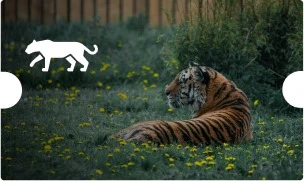Flora
Kaziranga National Park boasts a rich diversity of plant life that enhances its wildlife habitat. The landscape is dominated by tall elephant grass in the western lowlands, providing crucial cover for many species. Scattered trees such as kumbhi, Indian gooseberry, and cotton trees offer shade and refuge. Along the Brahmaputra River, aquatic plants like water lilies, lotus, and water hyacinth thrive. Seasonal flooding creates pockets of swampy areas and moist forests, contributing to the park’s vibrant and varied flora. This botanical richness supports the park’s exceptional biodiversity.
Fauna
Kaziranga National Park's diverse habitat supports an impressive range of wildlife. It houses the world’s largest population of one-horned rhinoceros and the highest density of tigers globally. Herds of wild water buffalo and swamp deer graze the grasslands, while elephants and gaurs roam the forests. Predators like leopards, jungle cats, and fishing cats add depth to the ecosystem. The park also shelters all of India’s free-ranging primates (excluding Western Ghats endemics). Birdwatchers can enjoy spotting over 478 species, including eagles and herons, while smaller mammals like the rare hispid hare enrich Kaziranga’s biodiversity.











